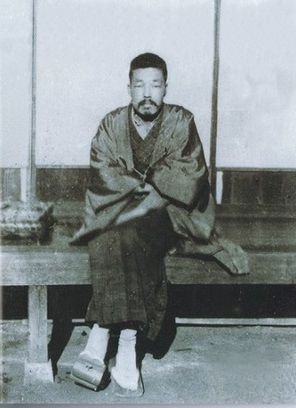Today's haiku comes to us from the last of the 4 great haiku masters of Japan, Shiki (子規).
cool summer breeze
a thousand green mountains
a lone temple
—Shiki
薫風や 千山のみどり 寺一つ
(kunpū ya senzan no midori tera hitotsu)

(Woodblock print: Night at Hasedera Temple, by Kawase Hasui)
Well, I've previously covered 3 of the 4 Masters of Haiku in Japan—Basho, Buson, and Issa—now today we meet the last of those four great masters, Shiki.
Buson and Issa both followed the model set by Basho and more or less emulated him. They added their own touches, of course, but it was still Basho's poetry that they followed. Shiki on the other hand sought to reform Haiku. He renamed them haiku for starters—prior to him, they were called Haikai.
At times in his life he called for abandoning the strict 5/7/5 format as well as the required nature word, but at other times he followed this tradition. He sought to get rid of the fantasies about nature as well as the wordplay that older haiku poets relied on and wanted to bring in more realism to the writing style.
In the haiku I shared above, we can see this realism he was after.
If we can say anything about what he accomplished, he may have saved haiku from fading away. When he came along, there were no living haiku masters and the art was considered old-fashioned and not suitable for the modern Meiji era (1868-1912). He took the poetic form and breathed new life into it and made it popular again.
He also had a great beard.

If you have any questions or comments, please leave them below.
Don't miss the other great haiku in the Haiku of Japan series!
#1 - Traveling to the inn
#2 - Childless Woman
#3 - Old Dancing Butterfly
#4 - Seeing the Moon
#5 - Checking the Scarecrow
#6 - Skill of Insects
#7 - The Spider Lilies
❦
 |
David LaSpina is an American photographer and translator lost in Japan, trying to capture the beauty of this country one photo at a time and searching for the perfect haiku. He blogs here and at laspina.org. |
